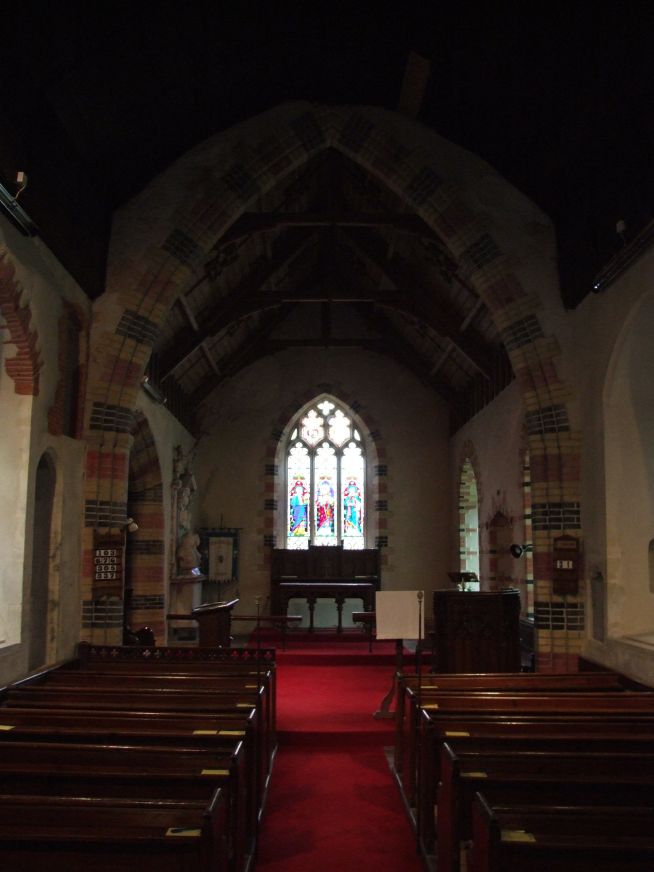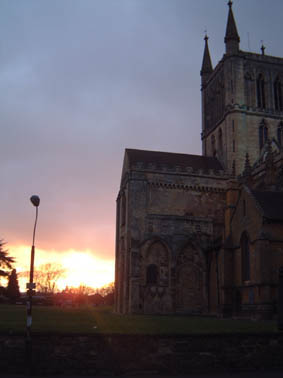
Friday, February 29, 2008
Today in the Middle Ages - Leap Year Edition

Vikings had more fashion flare than previously thought: study

'100 000 Years of Sex' opens in Germany

Thursday, February 28, 2008
Ancient letter will be showcased in new City Archives ‘Document of the Month’ feature

Montrose’s letter was chosen to highlight how exciting some of the sources can be. It publicises a dramatic event from a less familiar period of Aberdonian and Scottish history in a way that is easily accessible.
Workmen dredge Medieval bones from river

Shroud of Turin Gets High-Def Scrutiny

As hundreds of shots were taken using sophisticated equipment, the process, itself, was recorded by the British Broadcasting Company, which will be airing a program about the project on the Saturday before Easter.
Speculation about the linen cloth continued as well as debates over the validity of the carbon-14 tests.
Ramsey, a top expert in the use of carbon dating in archeological research, is skeptical the new theory will prove that the carbon dating tests were inaccurate.
"There is nothing new, as far as I know, which would change the situation. These ideas have been raised previously and none has been shown to have any merit. Many hypotheses, such as contamination, fire changing the results and more dubious assertions have been made, but none has seriously challenged the 1988 dating," Timothy Jull, a professor in geosciences at the University of Arizona who specializes in carbon dating, told Discovery News.
Wednesday, February 27, 2008
A Taste of Honey: Is mead poised for a comeback?

Ancient church wall art discovered

Medieval chest gets new lease of life

Monday, February 25, 2008
Riding to rescue vital record of English Medieval Knights

Sunday, February 24, 2008
Today in the Middle Ages

Did you hear that sound? It was sound of another movie raping the middle ages...

Open house at Salisbury Cathedral

Liane Whittles, marketing officer for Salisbury Cathedral, said, "With so many new and exciting events this year, this seemed the right time to offer what, for the Cathedral, is a brand new facility on our informative and up-to-date website.
Friday, February 15, 2008
Soon to be home of our very own Matt McHaffie...
 Scottish Parliament records are being digitised by the department |
Studies has opened at the University of St Andrews.
The new institute will house 30 staff from departments across the university, including English, history, modern languages and divinity.
St Andrews already has a Medieval History department but the new facility will cover a wider subject area and will result in staff numbers doubling.
The department has been involved in a project to digitise parliament records.
When it ends this year, it will create one of the most comprehensive records of Scottish Parliamentary proceedings ever made available.
The project has lasted almost 10 years.
Unique offering
The new centre will cover research and teachings from across the Medieval world.
It will range from the Middle East and the Mediterranean to the British Isles and Scandinavia.
Institute director Dr Frances Andrews said, "We currently have one of the largest centres for the study of Medieval History in the Anglophone world, but there has been an increasing trend in recent years to develop interdisciplinary studies in this area.
"The teaching will include an extraordinary chronological range and by combining Byzantine and Middle East Studies with study of the medieval west, make us unique in the UK.
"The development will not only bring world class researchers to St Andrews but will encourage creative collaboration between colleagues in different schools across the university."
The centre's opening is being marked by a public lecture by a world renowned expert on the middle ages.
Professor Gerd Althoff, from the University of Munster, will speak about forms and functions of irony in Medieval politics.BBC News, Wednesday, 13 February, 2008, http://news.bbc.co.uk/2/hi/uk_news/scotland/edinburgh_and_east/7241455.stm
Tuesday, February 12, 2008
Monday, February 11, 2008
Virtual Trebuchet

Combine your interests in Medieval warfare, physics, and homework avoidance with this link to a virtual trebuchet challenge. Hey, you never know when your time spent practising this may come in handy.
The Treb Challenge
Wednesday, February 6, 2008
Word of the Week

Monday, February 4, 2008
Best band name evah: Flyleaf
Sure they make me want to tear off my own ears, but they're name after a MS term.
Seriously though, what else could Flyleaf mean?
Kids these days and their slang...
.jpg)


